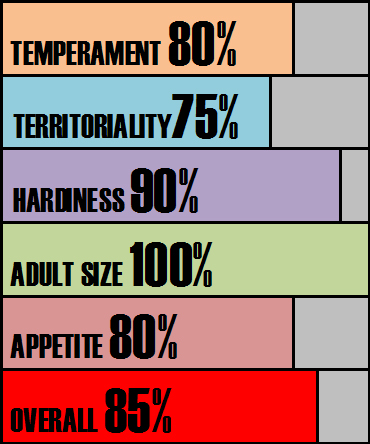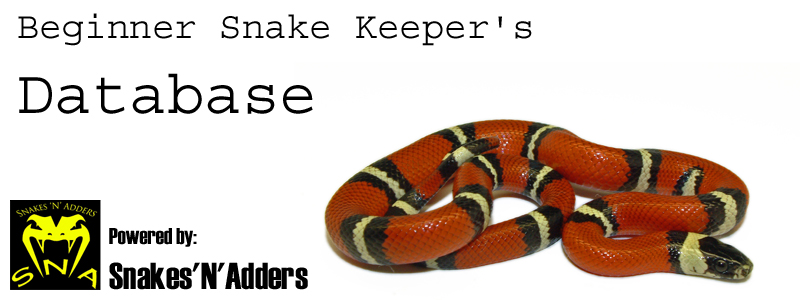
Species Notes based on experiences:
Milk Snakes are examples of batesian mimicry. Milk Snakes have evolved to impersonate the deadly Coral Snake (Micrurus). The old saying Red next to Yellow…kill a fellow, Red next to Black….venom lack or friend of jack. This is in reference the way the annulations or rings of the milks snake’s pattern are arranged. Save for adult size, the amount of black pigment present and overall build of the snake Milk Snakes are generally very similar snakes to consider as pets regardless of subspecies. Some species have been excluded from consideration because of their much smaller than average size such as the Red Milk Snake (Lampropeltis triangulum syspila) which may require lizards as first prey to establish in captivity. All the Milk Snakes listing on this site will generally feed unassisted on rodent prey from birth. This snake has now been rolled into the Polyzona Milk snake (Lampropeltis polyzona) along with three other subspecies listed individually on this site. Look through the images and decide for yourself but I believe this to be folly. We have bred for ‘Pueblan’ standards for 30 years and’Sinaloan’ Standards for 30 years. Why on earth would we want to mix them? Bear in mind taxonomic decisions are based upon shifting sands, and what is de rigour one minute is old news the next. We could have mixed species that in time may well be separated again. The Conant’s Milk Snake is a wonderfully looking Milk Snake with interesting banding. The red bands are up to 4 times as thick as the black bands. Light black tipping to the red scales gives a lovely netted effect to the snake. The Black and light pastel yellow bands are interesting in shape where they looking to be trying to form a bow tie (or the outline of a classic boiled sweetie in a wrapper) across the back of the snake. A central yellow circle is joined by a yellow long triangle leading down the flank. The black outline next to the yellow follows this shape but is a straight line when bordering the red. Aberrancies to the pattern can occur and can give an interesting busy effect to the normally regular banding.
Score analysis:
When considering temperament, Conant’s Milk Snakes are generally very well behaved. They can be nervous or flighty snakes like some of the other Milk Snakes listed here as youngsters. If defensive behaviours occur, this will include tail rattling and vacating the contents of the cloaca. Biting is incredibly rare, the preoccupation with nervous Milk Snakes is to escape. With patience and time the snake will usually readily calm down and by the time the animal is a year of age it will be fully compliant.
Territory issues are nearly always more prevalent than true temperament issues. If startled snakes may rattle their tail and throw coils of their body in an agitated manner. This usually ends up covering the head (on purpose), if this fails a Milk snake may dart away trying to escape the human that disturbed it.
This snake is more subtropical than many of the other Milk Snakes although it can occur at altitude inland. Care in captivity is pretty much universal for most Milk Snakes but with this subspecies the presence of a moss box or damp hide is a strong suggestion to aid with shedding. Over subsequent generations this snake has proven itself to be of comparable hardiness to any of the other Milk Snakes discussed on this website.
This is a slightly longer than average Milk Snake approaching 4ft in length. Although it does not carry much mass. Similar in build to the Nelson's and Sinaloan Milk Snake. Easily outweighed by the Pueblan Milk snake at a similar length.
Initially babies may be nervous and flee from food offered on tongs. It can take a good 6 months before the snakes are comfortable strike feeding. Some keepers just default to leaving their snake to it and leave their prey on a tray for them to hoover up in their own time. Milk Snakes are cannibals, they should be housed separately always. In the wild they are reptile feeding specialists taking both other snakes and lizards. Pairing of animals for breeding trials should be done with care.
Tub:
50ltr (exceptional animals would benefit from a vivarium)
Vivarium:
90cm x 45cm x 45cm
Budget rig: -
60cm x 30cm heat pad
On / off thermostat
Digital thermometer to monitor thermostat performance
Warm hide
Cool hide
Water bowl
substrate
Recommended rig (vivarium only): -
150w ceramic heat emitter
Ceramic lamp holder and bracket
Bulb guard
Day night thermostat
Digital thermometer to monitor thermostat performance
Various logs and caves along the thermal gradient
Damp hide
Climbing and exercise branches
Plants and foliage (live or artificial – your choice)
Water bowl
Substrate
UVB light (8w T5 shade dweller 7% kit from Arcadia or equivalent) (optional)
Subterranean section to vivarium for further psychological security (optional)
Climate analysis:
There is a slight amount of variability to this species. Coastal regions see this species occupying tropical forest, this then alternates to deciduous oak forest as altitude begins to increase as we move inland. A gentle cool down for 6 weeks of so to around 15-18°c with a stoppage on feeding would see the animals cycle for winter. This process will also help keep the snakes lean.
Conclusion:
A superb pet species that is beginning to get very scarce in UK collections indeed. More work must be done with this fantastic snake to ensure future generations get to enjoy them. For the love of god do not hybridise with other subspecies now grouped together as Lampropeltis polyzona. Conant’s Milk Snakes I my experience have been some of the naturally tamest of the Milk Snakes and very well behaved.

